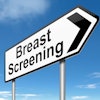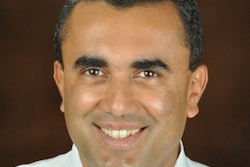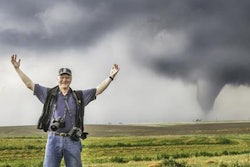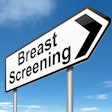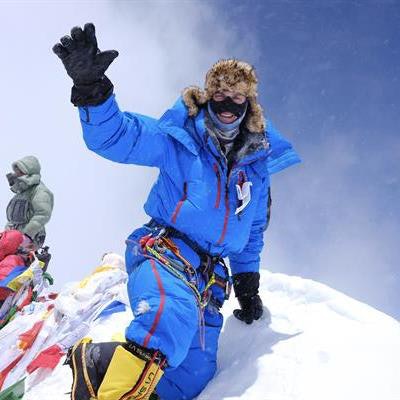
With only one more mountain to go, Colorado radiologist Dr. Peter Lowry is on pace to scale the tallest summit in each of the seven continents of the world before year's end. His motivation? Reinvigoration for a relatively sedentary line of work that often demands long hours spent indoors.
Climbing some of the tallest mountains -- including a summit of Mount Everest in May -- might not offer much revelation in the science aspect of radiology, but spending hours and hours on end climbing a very long way at what feels like the world's slowest pace has taught Lowry a lot about how to approach his life and work, he told AuntMinnie.com. Lowry is a musculoskeletal radiologist formerly on the faculty at the University of Colorado and now working under Radiology Partners.
"I think one of the most interesting lessons that I've pulled from Mount Everest and the other climbs is just how far you can make it if you keep on taking steps, because it all adds up," he said. "And I think that has been the most impressive thing to me -- looking down and seeing just how far you've made it. And realizing that, despite that slow pace, something as challenging as [climbing a mountain] is something that can be accomplished."
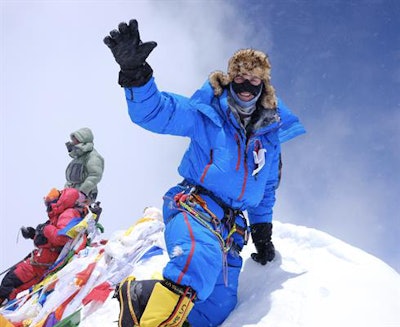 Dr. Peter Lowry at the peak of Mount Everest. All images courtesy of Dr. Lowry.
Dr. Peter Lowry at the peak of Mount Everest. All images courtesy of Dr. Lowry.Scaling new heights
Ever since he was a child growing up in rural Colorado, Lowry has long had an affinity for the outdoors. In his youth, he spent countless weekends with friends and family on casual hikes and eventually ventured to climb dozens of the 14,000-ft-high mountains, or "fourteeners," littered across the state. Yet he never considered mountain climbing anything more than a pastime.
It wasn't until Lowry returned home from his tenure as a medical student in New York City in 2008 that he was able to fully appreciate how deeply he missed being out in nature and the vast expanse of the Colorado landscape. Having access to the outdoors was especially important considering the amount of time he would be spending inside for work.
Soon thereafter, Lowry and a classmate from medical school embarked on a trip to Ecuador, hoping to climb Mount Chimborazo before beginning his radiology residency. He had read that the top of the roughly 20,000-ft-tall volcano was the farthest from the center of the earth and saw it as an opportunity to scale, in a sense, the tallest peak in the world.
Nearly eight years later, well into his career as a radiologist, Lowry revisited the idea of climbing some of the highest summits. In 2016, he went with a group of friends, including another radiologist, to Tanzania, Africa, to climb Mount Kilimanjaro.
"I had thought about trying to climb the tallest summit in every continent before," Lowry said. "Mount Kilimanjaro was the first ... and that was the game changer, because from there I knew that it would be possible."
To date, Lowry has trekked the following mountains, each of which is believed to hold the tallest peak in their respective continents:
- Mount Kilimanjaro in Tanzania, Africa
- Mount Aconcagua in Argentina, South America
- Mount Denali in Alaska, North America
- Mount Elbrus at the border between Europe and Asia
- Mount Vinson Massif in Antarctica
- Mount Everest in Nepal, Asia
Getting perspective
Lowry's most recent climb was Mount Everest -- widely considered the tallest mountain in the world. His decision to scale Everest was particularly tricky since the trip would require a two-month leave of absence from work. With the combination of stored up leave days and coverage by his colleagues, he found a way to manage the time off.
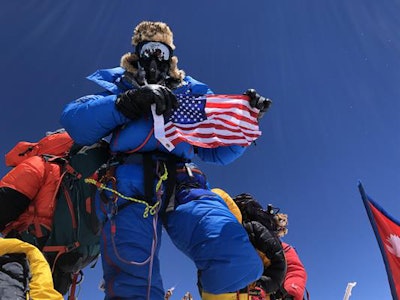 Dr. Peter Lowry reached the peak of Mount Everest in May.
Dr. Peter Lowry reached the peak of Mount Everest in May.Adding to the difficulty of scheduling the trip, Lowry was faced with a separate, more personal challenge: His father had begun to show signs of physical decline from a recent diagnosis of Parkinson's disease.
The circumstances encouraged Lowry to use his plan to climb the highest peaks as a springboard for supporting Parkinson's research. He donated the funds he raised for the Mount Everest expedition to the Michael J. Fox Foundation for Parkinson's Research.
Finally, this past spring, Lowry and a team of climbers flew to Nepal and made their way to the base camp at Mount Everest. They spent several weeks camping in the area and climbing part of the way up the mountain and then back down to acclimate to the elevation and cold weather.
On May 18, after weeks of preparation, they started their official climb up the mountain. The first few days were fairly uneventful, and the team safely made it to the four camp stops on their way up. At some point toward the latter portion of the climb, the route started to become extremely crowded. There appeared to be a couple moving very slowly at a narrow point of the fixed-line pathway, making it nearly impossible for anyone to pass.
Upon reaching the couple hours later, Lowry's team urged them to return to base camp, fearing their slow pace would leave them without enough oxygen in their tank to make it to the top. The couple refused.
"The difficult part of the climb was that juxtaposition of knowing that someone is in trouble and seeing that they don't know that and trying to convince them to save their own life," Lowry said. "That's all part of this story and why I wanted to talk about it."
Lowry's group ultimately decided to carry onward despite the delay and eventually arrived at the top on May 23. The climb lasted about six days. Only later on did they learn that the couple that had been holding up the line did not survive the climb.
Mountains beyond mountains
"If you go to YouTube and pull up a video of someone climbing Everest near the summit, it's incredible how slowly people move, which is by necessity," Lowry said.
Nonetheless, people do end up reaching the top, he continued. In a way, climbing mountains resembles the effort people give to their careers in radiology or any other job -- dedicating a lot of time to achieve success in their fields.
There are various other lessons you can draw from Lowry's experiences: the importance of setting goals; the merits of preparation; learning to accept advice or assistance from others; and, perhaps most pertinent to a profession like radiology facing high burnout rates, the value of finding something that helps you recharge your batteries.
"We all get caught in the grind of our jobs, whether it's in radiology or anything else ... so finding the thing that renews or refreshes you and dedicating time to that task almost becomes a job function because it can help you perform better at work," Lowry said. "For me, that has been the outdoors and mountain climbing, and I think that thing is different for everyone."
Lowry, together with his father, plans to climb Mount Kosciuszko in Australia this December and, at last, complete his seven-summit endeavor.


